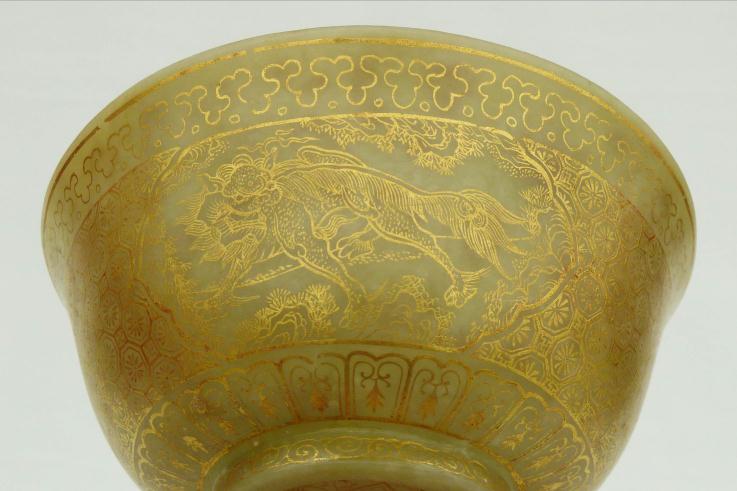

Title: Antique Stamped Chinese Hand Painted Gold Gilt & Jade Rice Bowl
Shipping: $45.00
Artist: N/A
Period: 19th Century
History: N/A
Origin: N/A
Condition: Very Good
Item Date: 19th century?
Item ID: 6000
This bowl is formed from semi-translucent Chinese jade, decorated in gilt with three spiritual beasts on the exterior surrounded by flower pattern designs. There is also a dense floral-scroll on the interior. This type beasts is a auspicious, and they are a type of sacred beast king, represents noble and power. It has a really beautiful shape, and its really neat and elegant. In good Condition,there are only few minor scratches on the gold outlines.
Link: http://en.wikipedia.org/wiki/Chinese_jade
Chinese jade is any of the carved-jade objects produced in China from the Neolithic Period onward, forming the main Chinese contribution to the wider category of hardstone carvings. The Chinese regarded carved-jade objects as intrinsically valuable. They metaphorically equated jade with human virtues because of its hardness, durability, and (moral) beauty. Jade was prized by the Chinese for its durability, its musical qualities, its subtle, translucent colors, and its alleged protective powers - it was thought to prevent fatigue and delay the decomposition of the body.[1]
Chinese jade carving begins with the carving of ritual objects, including blades for ji and dagger-axes clearly never intended for use, and the "Six Ritual Jades" including the bi and cong, which according to much later literature represented heaven and earth respectively.[2] These are found from the Neolithic Liangzhu culture (3400-2250 BCE) onwards, and blades from the 2nd millennium BCE Shang Dynasty on.[3] Traditional Chinese culture attaches strong powers to jade; the jade burial suits in which aristocrats of the Han Dynasty (206 BCE–220 CE) were buried were intended to preserve the body from decay.[4]
The Han period also saw the beginning of the tradition of fine decorative jade carving which has lasted until modern times.[5] In general whiteish nephrite jade was the most highly regarded in China until about 1800, when the deeper and brighter green of the best jadeite became more highly favoured. There are related Asian traditions of Korean jade carving, in Southeast Asia, and to a much lesser extent Japan.